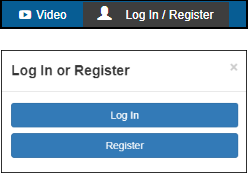A Tribute to Simon Pozner, of Blessed Memory
Elijah
Pozner, a physicist, would often require various pieces of expensive equipment
to conduct his experiments. After he’d complete a particular analysis, the apparatus
became of no use to him, and simply took up space in his office.
His
brother, Simon, a mathematician, noted this phenomenon and realized that he
could help people, like his brother Elijah, reach interested buyers of
perfectly good technical equipment – if he’d just be able to post those
products somewhere online!
He
decided to teach himself computer programming, and with the goal of creating a
unique platform designed & dedicated specifically for promoting the sales
of technical equipment, Used-Line was born!
In
1999, S. Pozner Technologies, the officially registered name of Used-Line.Com, launched
what would become the global online marketplace for new and used
technical equipment.
Already
by the year 2008, Used-Line.Com received over 100,000 hits a month!
Simon
used his genius to develop some of the most advanced and used-friendly tools
available online today for the promotion, classification, and searchability of
new and used technical equipment.
Some
of his most impressive innovations are Used-Line’s:
- Robot (spider),
- Advanced & detailed
search engine capabilities
- User-friendly platform for
connecting buyers to sellers
To
our great dismay, Simon passed away in 2012 leaving his wife, Esther, to assume
the position of CEO at Used-Line.
By
no means was Esther prepared to let Used-Line rest on its laurels! She went
ahead and hired top programmers and developers to take over and continue making
Used-Line better, and better, and better!
Indeed,
just in 2018 alone, Used-Line developed a number of new & exciting features
(make sure you read our newsletters & updates!), and revamped our site to
provide an even more user-friendly and aesthetically pleasing experience!
So 2019 is a significant year for Used-Line, as it
marks its 20- year anniversary. We look forward to sharing more of our
experience with you, and helping you sell and buy your equipment quickly and
easily!














 THE ACADEMIC YEAR 2016/2017 IS HERE
THE ACADEMIC YEAR 2016/2017 IS HERE 